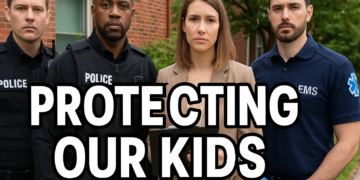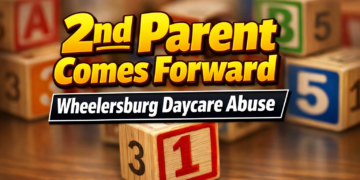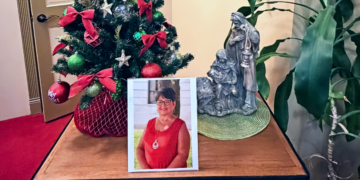Nestled along the banks of the Ohio River, Portsmouth, Ohio, exudes a charm reminiscent of a bygone era. But beneath the veneer of brick facades and historic streets, a tide of homelessness threatens to engulf the city. Recent data reveals a sharp rise in individuals experiencing homelessness, painting a stark picture of struggle and hardship amidst the scenic backdrop. This data aligns with nationwide increases in homelessness and is unfortunately not unique to our community. It isn’t hard to spot the same concerns and challenges throughout other cities in the US, a quick Google search reveals challenges throughout the heartland.
Counting the Unseen:
The 2024 Annual Point-in-Time Count conducted by the Portsmouth Metropolitan Housing Authority (PMHA) and the Portsmouth Homeless Shelter (PHS), point-guarded by Maureen Cadogan, identified a staggering 223 individuals experiencing homelessness, a 58% increase from the 2020 count. This translates to roughly 1 in every 130 residents struggling to find shelter, a statistic that rings heavy in the city’s 20,000-strong population. Whether this increase relates to harsh weather conditions during the event, or improved advertising and communications of the event is hard to define, but these numbers are cause for serious concern, nonetheless.
A Tangled Web of Causes:
The surge in homelessness can be attributed to a complex web of factors, each pulling at the threads of individual lives. The opioid crisis continues to grip the region, leaving a trail of addiction and shattered families in its wake. Generational addiction has generated younger and younger addicted individuals without resources or the desire to build anew. Young persons don’t know what a clean, healthy life looks like, and can’t envision seeking help. The local school systems are plagued with troubled youth that struggle with behavioral and mental health issues, leaving teachers and administrators in a constant state of challenge. Lack of affordable housing options further exacerbates the problem, pushing vulnerable individuals and families onto the streets. PMHA maintains a lengthy wait list for housing, and its housing portfolio is simply not large enough for the poverty-stricken population in our region. Aside from a new young adult’s home in Hisle Park, PMHA has not been able to provide a significant expansion in public housing within the region in a lifetime, despite a growing unemployment and poverty rate. In addition, PMHA struggles to keep drugs and violent crime out of their housing, generating a cycle of homelessness-public housing-arrests-homelessness, over and over. Growing mental health challenges and limited access to support services add another layer of complexity, creating a seemingly insurmountable cycle of hardship.
Faces Behind the Numbers:
Behind the cold statistics are human stories etched with pain and resilience. Take Jane Doe (1) from Portsmouth, OH. Jane Doe states that she has a hard time trusting others due to past trauma and won’t seek help. Now, she his homeless on the streets and addicted to drugs, clinging to the hope of sobriety, and only dreaming of securing a stable home for herself.
Or consider John Doe (1) who originates from Florida. John Doe (1) states that he came to Portsmouth due to an ex-girlfriend, seeking to reconcile. John Doe (1) has been unable to gather funding to return to the state of Florida and is stuck here on the streets. John Doe (1) sleeps in makeshift shelters along the East end of Portsmouth and wanders aimlessly during the day in a desire to return south.
Consider John Doe (2) from Portsmouth. John Doe (2) stated that he lost both of his parents and has been homeless since the passing of his parents. No one will help him, and he doesn’t want to turn to social services as he cannot freely use drugs in those facilities. John Doe (2) also camps in the East end in whatever shelter and housing he can find for the night.
Also, Jane Doe (2) from Portsmouth. Jane Doe (2) told us a devastating story about her housing being condemned, being forced to the streets. Jane Doe (2) said that she has been unable to obtain housing due to a vicious cycle of unemployment without the necessary resources and documentation to obtain a rental. Jane Doe (2) has also been residing on the East end without shelter during the harsh elements.
Perhaps surprisingly, surveys conducted at the PHS last summer, coupled with surveys at the recent Point-In-Time Count, revealed that none of the individuals living in the shelter nor walking the streets on that night were “imported” to the area for treatment – a common misperception and blame game played among local political leaders and businesspersons. Aside from a small number of persons passing through the region in desperate circumstances and for a variety of ill-fated reasons (i.e., chasing past loves or seeking a better life “on the east coast”), the problem pertains almost entirely to our own, individuals born and raised in Portsmouth, Ohio and the surrounding communities. Why is this important? Because the first step to fixing a problem is to understand the problem, and understanding what causes homelessness is necessary to fix homelessness.
From Compassion to Action:
While the tide of homelessness may seem overwhelming, a wave of compassion and action is starting to crest in Portsmouth. Local organizations like the Portsmouth Salvation Army and Hope House are on the frontlines, providing emergency shelter, meals, and essential services to those in need. The Counseling Center (TCC), who operates the region’s only Crisis Center for individuals experiencing homelessness, violence, mental health emergencies, and/or addiction, recently expanded their mental health services by nearly 3-fold, quietly opening the region’s only fully supportive housing location for individuals suffering from mental health and homelessness – a need that continues to grow beyond our area resources. According to TCC spokesperson Makenzie Gruber, “TCC realizes that there are growing mental health needs in our community, and in response opened additional Crisis and Mental Health beds and service lines, providing safe shelter, clinical care, case management, and food safety to these individuals. We’ve worked hard over the past few years to expand mental health offerings and the community needs to understand that these comprehensive services are here – but individuals need to be open to accessing this care. Many times, individuals aren’t compliant with housing rules and simply bounce back and forth between medical emergency rooms and the police station. There aren’t good answers for those individuals.”
Initiatives like the Portsmouth Housing Trust seek to increase the availability of affordable housing options, offering a glimmer of hope for a permanent escape from the streets. But growth is slow, and resources are few. Local government is stepping up as well, with city council recently allocating funds for additional outreach programs and mental health resources. All of these efforts create promise, but the true cause of homelessness must be addressed. Creating more buckets to help and house the homeless isn’t enough – prevention needs to be at the forefront.
After meeting with Mayor Charlotte Gordon and Vice Mayor Lyvette Barns-Mosley, it was encouraging to hear about the administration’s commitment to address the homelessness and mental health concerns that plague the Appalachian region, and believe that such efforts, combined with collaborative actions from community organizations and individuals like myself, can make a huge difference and impact.
A Sliver of Hope:
The challenges remain immense. Addressing the root causes of homelessness requires a sustained and coordinated effort, bringing together community organizations, government agencies, and concerned citizens. It has to permeate society, entering schools, churches, and law enforcement offices. Only through collective action can the tide be turned, ensuring that Portsmouth retains its charm not just for tourists, but for all its residents, offering a safe harbor for everyone seeking shelter from the storms of life.
This article merely scratches the surface of the complex issue of homelessness in Portsmouth. By sharing stories, raising awareness, and supporting local initiatives, we can help turn the tide and ensure that everyone in Portsmouth has a roof over their head and a chance to rebuild their lives. Just as important, we need to focus on ensuring people can access care without the stigma of yesteryear. Not so long ago, individuals were shunned when mental health concerns and addiction became evident – a stigma that can drive people from seeking help. Treatment facilities aren’t the problem, law enforcement isn’t the problem, the economy isn’t the problem, a lack of hospital care isn’t the problem, politicians aren’t the problem. The elimination of mental health institutions nearly a century ago has proven a mistake – questionable care and conditions have been replaced with no care and pitiful conditions. Generational addiction, mental health struggles, and a lack of resources to care for those wandering aimlessly or standing on street corners are the problem.
Remember, every individual experiencing homelessness deserves our compassion and support. And remember, not every individual panhandling for money isn’t homeless – for some it’s a line of income. Let’s work together to ensure that the rising tide of homelessness in Portsmouth is met with a wave of solidarity, compassion, intelligence, and action.





















































































